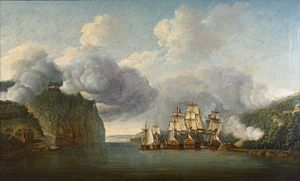Fort Lee Historic Park facts for kids
| Fort Lee Historic Park | |
|---|---|
Quick facts for kids 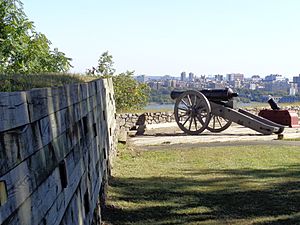 |
|
| Lua error in Module:Location_map at line 420: attempt to index field 'wikibase' (a nil value). | |
| Location | Fort Lee, New Jersey, United States |
| Area | 33 acres |
Fort Lee Historic Park is a special place in Fort Lee, New Jersey. It sits high up on a steep cliff called the Hudson Palisades. From here, you can look down at the Hudson River and a spot called Burdett's Landing. This area was once known as Mount Constitution.
Long before Europeans arrived, Native American people lived here for thousands of years. This bluff became very important during the American Revolutionary War in 1776. George Washington and his soldiers set up camp here, right across from another fort called Fort Washington in Manhattan. The park is named after General Charles Lee. Today, you can see a recreated army camp, including a blockhouse, cannons, and soldiers' living areas. There's also a visitors center to learn more. The park is part of the Palisades Interstate Park Commission.
At the northern end of the park, there are two amazing viewpoints. You can see the huge George Washington Bridge, the wide Hudson River, and the tall buildings of Upper Manhattan. This park shows where a key part of the Revolutionary War happened. It was a vital spot for the Continental Army to protect the Hudson River from British ships.
Contents
Fort Lee: A Revolutionary War Stronghold
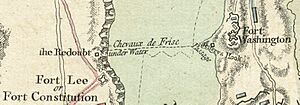
Fort Lee was first called Fort Constitution. It was a fort built during the American Revolutionary War. It stood on top of the Hudson Palisades cliffs in what was then Hackensack Township, New Jersey. It was directly across the river from Fort Washington in New York City.
Building Fort Constitution
George Washington, who was the leader of the Continental Army, gave orders to General Mercer. He told him to gather all available soldiers and build a fort on the west side of the Hudson River. Construction started in July 1776. This new fort was named Fort Constitution.
The fort was built on the western side of the road that went up the hill from the river landing. At the same time, Fort Washington was being built almost directly across the Hudson River in New York. To help protect the river, special underwater obstacles called chevaux-de-frise were placed between the two forts. These were like giant spikes to stop enemy ships.
Protecting the Hudson River
These two forts, Fort Lee and Fort Washington, were meant to stop British warships from sailing up the lower Hudson River. At first, soldiers focused on building defenses close to the water near Burdett's Landing. Later, more defenses were added on top of the bluff. Joseph Philips, a commander in the New Jersey State Militia, oversaw this work.
The army took over the Bourdette family's ferry service. Peter Bourdette, a patriot, had to leave his home. He even offered his enslaved people to help General Mercer with the construction.
In late September 1776, Fort Constitution was renamed Fort Lee. It was named after General Charles Lee of the Continental Army. George Washington used the stone Bourdette house as his headquarters when he was at Fort Lee. During this time, the ferry was very important. It was used to move supplies and was the only way to travel between Fort Lee and Fort Washington.
The Battle of Fort Lee: A Quick Escape
| Battle of Fort Lee | |||||||
|---|---|---|---|---|---|---|---|
| Part of the American Revolutionary War | |||||||
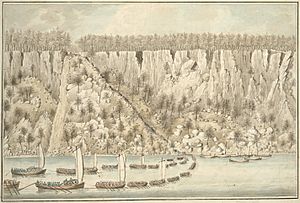 A painting by Captain Thomas Davies showing British soldiers landing at the base of the Palisades. |
|||||||
|
|||||||
| Belligerents | |||||||
| Commanders and leaders | |||||||
| Strength | |||||||
| 2,000 | 5,000 8 guns |
||||||
The Battle of Fort Lee happened on November 19, 1776. It was when British and Hessian soldiers successfully invaded New Jersey. This led to a quick retreat by the Continental Army during the American Revolutionary War. The British won this battle.
Before the Battle
Peter Bourdette's sixteen-year-old son, also named Peter, helped the army. He rowed back and forth across the river. He gathered information for General Washington about where the British forces might move. On the night before the battle for New York at Fort Washington, George Washington was rowed from Burdett's Landing. He met his senior officers in the middle of the Hudson River to plan their strategy. On November 16, 1776, George Washington watched the battle for New York from the bluff of Fort Lee.
British Attack and Invasion
Fort Lee became very vulnerable after the Continental Army soldiers at Fort Washington were defeated and captured on November 16, 1776. The British Navy now controlled the Hudson River. General William Howe ordered Charles Cornwallis to "clear the rebel troops from New Jersey." He wanted it done quickly before the weather got worse.
The British force included soldiers from Hesse, Germany, led by Colonel Carl von Donop. The invasion of New Jersey began on the night of November 19. About 5,000 British soldiers were ferried across the Hudson River on barges. Lord Cornwallis landed his force, which was between 2,500 and 5,000 men, on November 20, 1776. They landed at a spot sometimes called the "Lower Closter Landing," which later became known as Huyler’s Landing.
Cornwallis wanted to surprise Washington and crush the rebellion. He marched his men up the cliffs of the Palisades using a rough path. Then they moved southward through the Northern Valley. The path the British used later became a road for farmers. This road brought goods from the Northern Valley down to a dock at the river. Today, a park trail follows this old farmers' road.
George Washington and Nathanael Greene quickly ordered the soldiers to leave Fort Lee on the morning of November 20, 1776.
The American Retreat
The American soldiers then began a very fast retreat west. They crossed the Hackensack River at New Bridge Landing. Then they crossed the Passaic River at the Acquackanonk Bridge.
During Washington's retreat, which started along a road that is now Main Street, Thomas Paine wrote a famous pamphlet. It was called "The American Crisis" and was published in Philadelphia. It began with the well-known words, "These are the times that try men's souls."
Exploring Fort Lee Today: Museum and Park
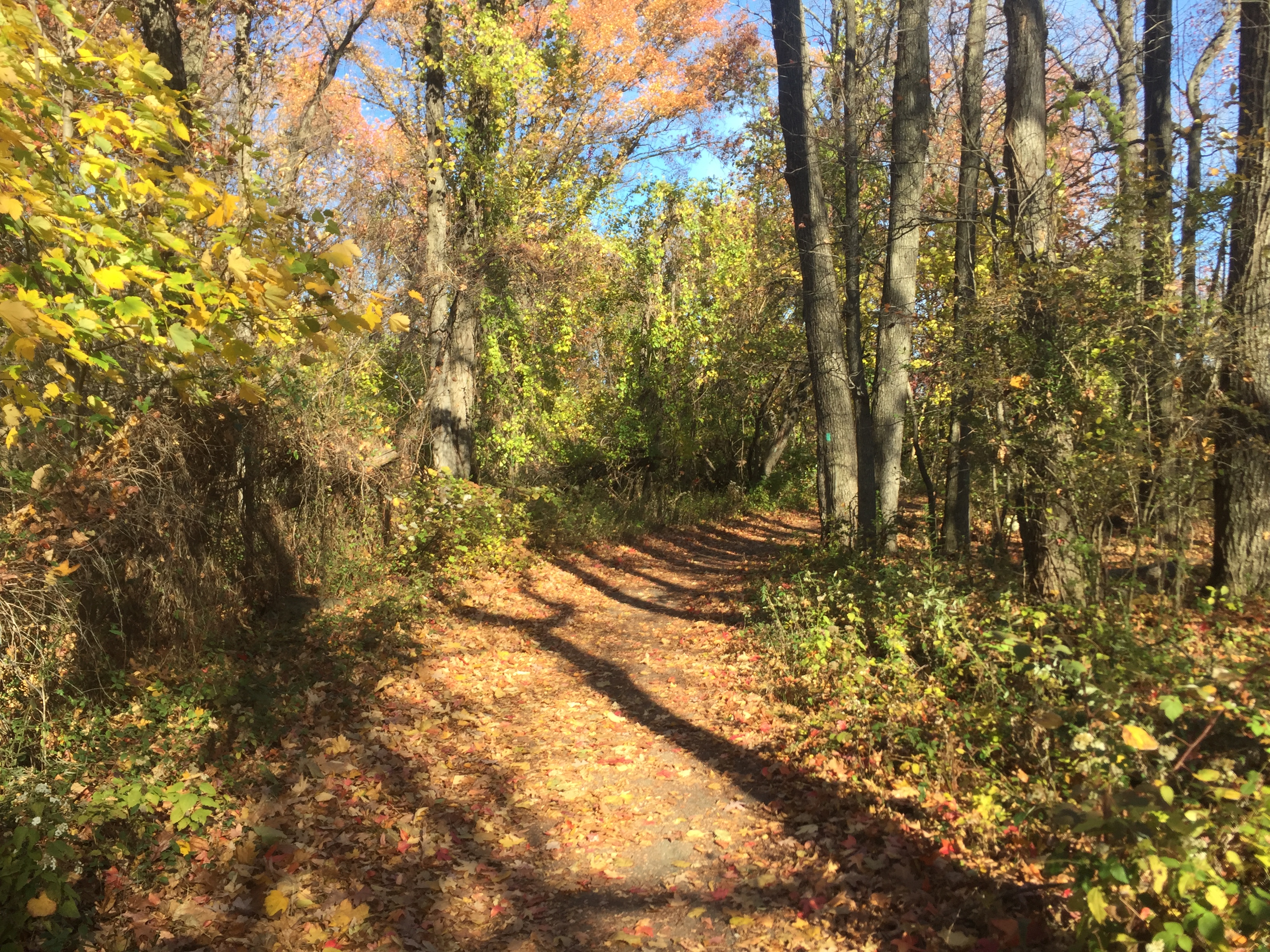
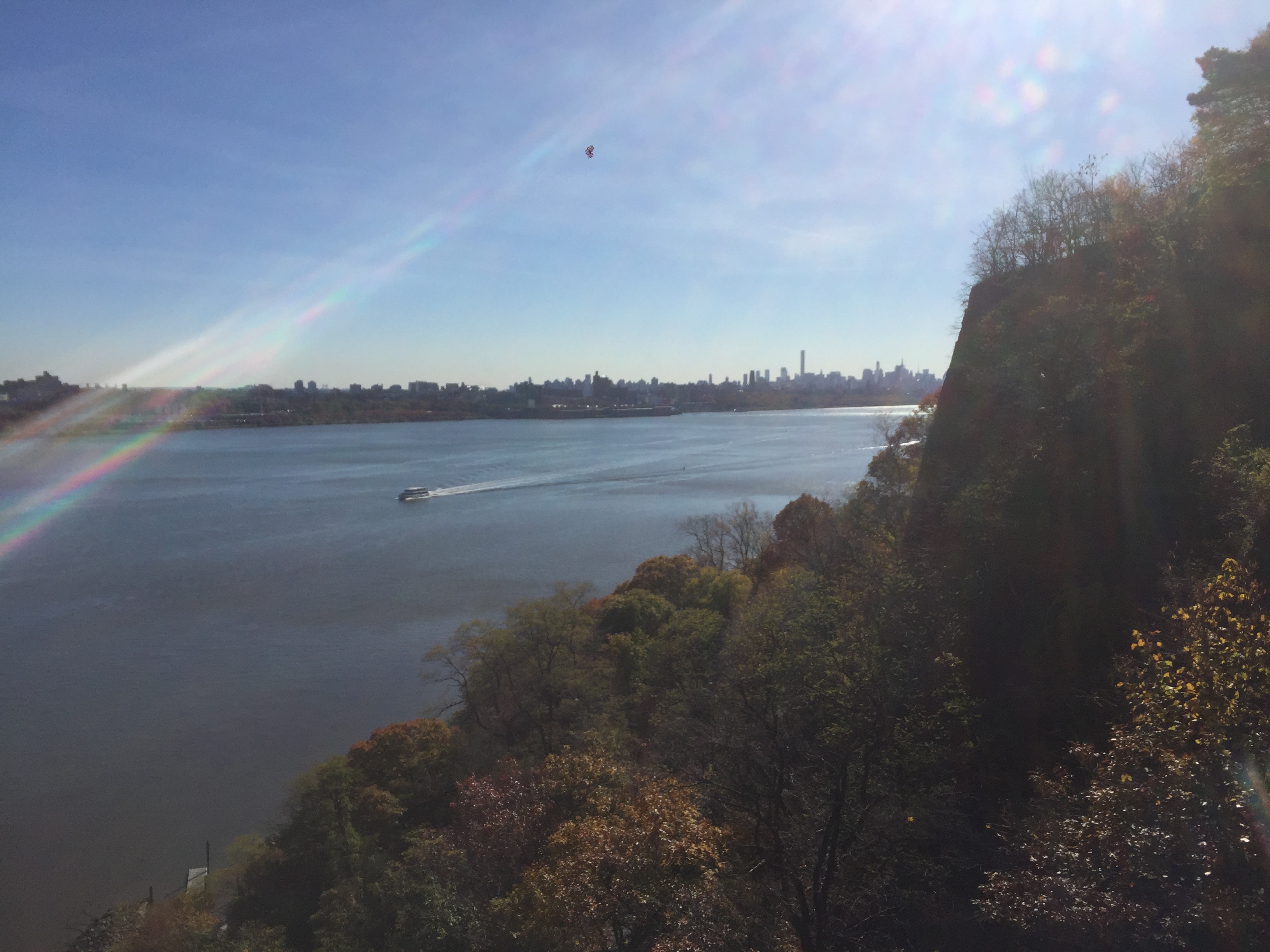


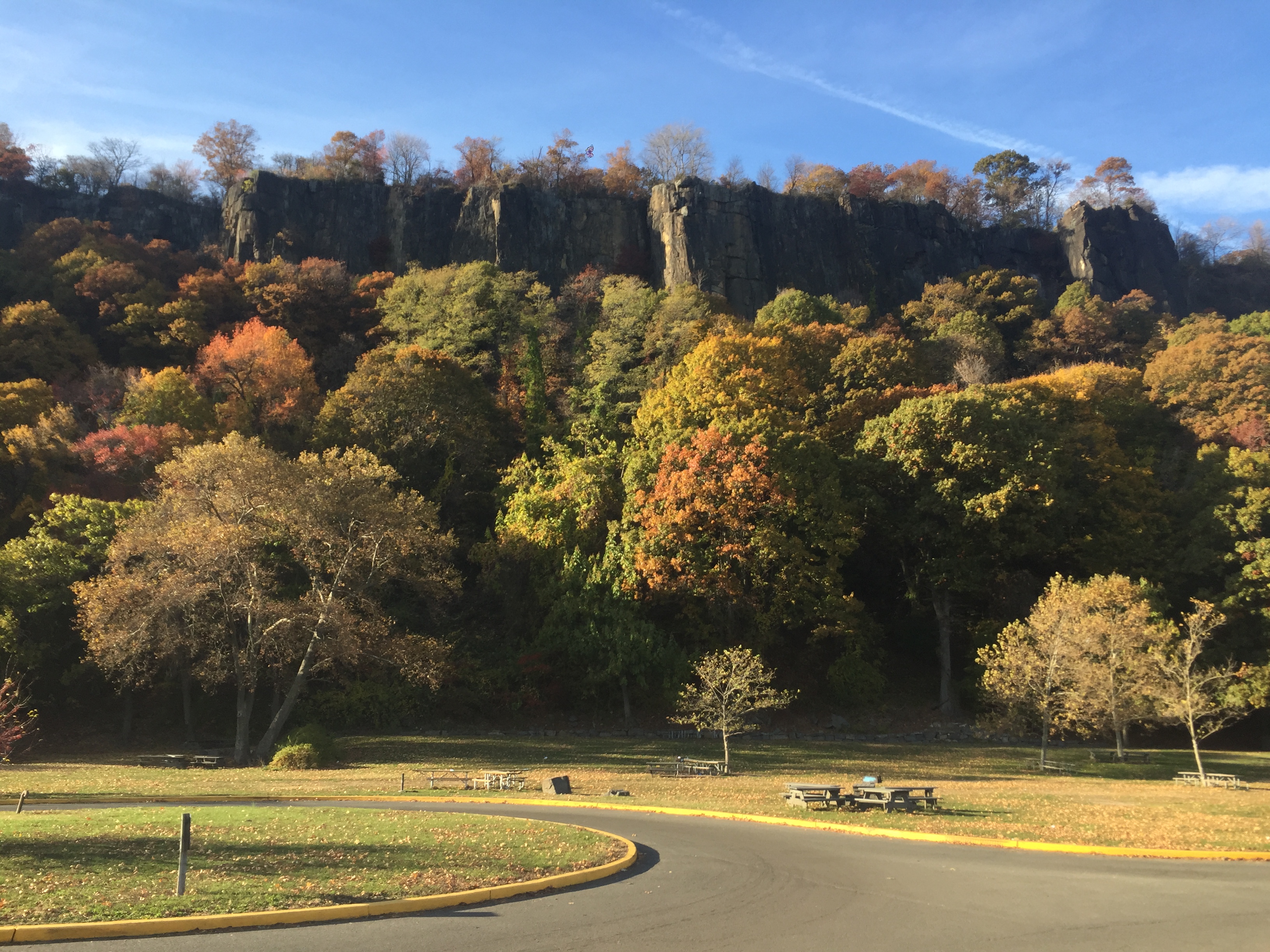 The Fort Lee Museum is located in Monument Park. This park was created by the Daughters of the American Revolution and opened in 1908. General John "Black Jack" Pershing attended the dedication ceremony. This park was part of the original Fort Constitution where the Continental Army was stationed. More than 2,600 soldiers were in and around the Monument Park area.
The Fort Lee Museum is located in Monument Park. This park was created by the Daughters of the American Revolution and opened in 1908. General John "Black Jack" Pershing attended the dedication ceremony. This park was part of the original Fort Constitution where the Continental Army was stationed. More than 2,600 soldiers were in and around the Monument Park area.
In 2004, the park was rebuilt for the Fort Lee Centennial Celebration. A time capsule was placed at the bottom of the monument. It is planned to be opened during the Bicentennial Celebration in the year 2104. Monument Park and Continental Army Plaza in Williamsburg, Brooklyn are the only parks in the United States dedicated to the soldiers of the American Revolution.
See also


